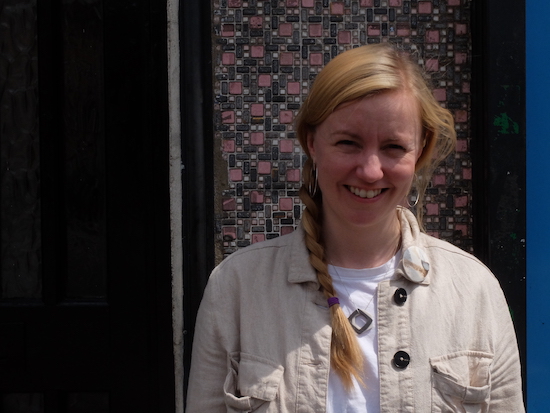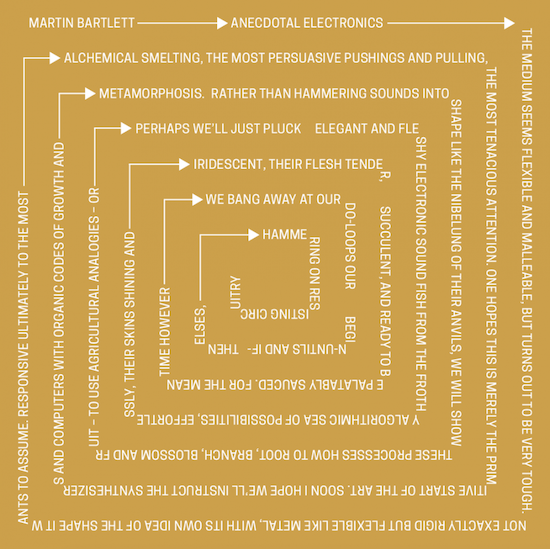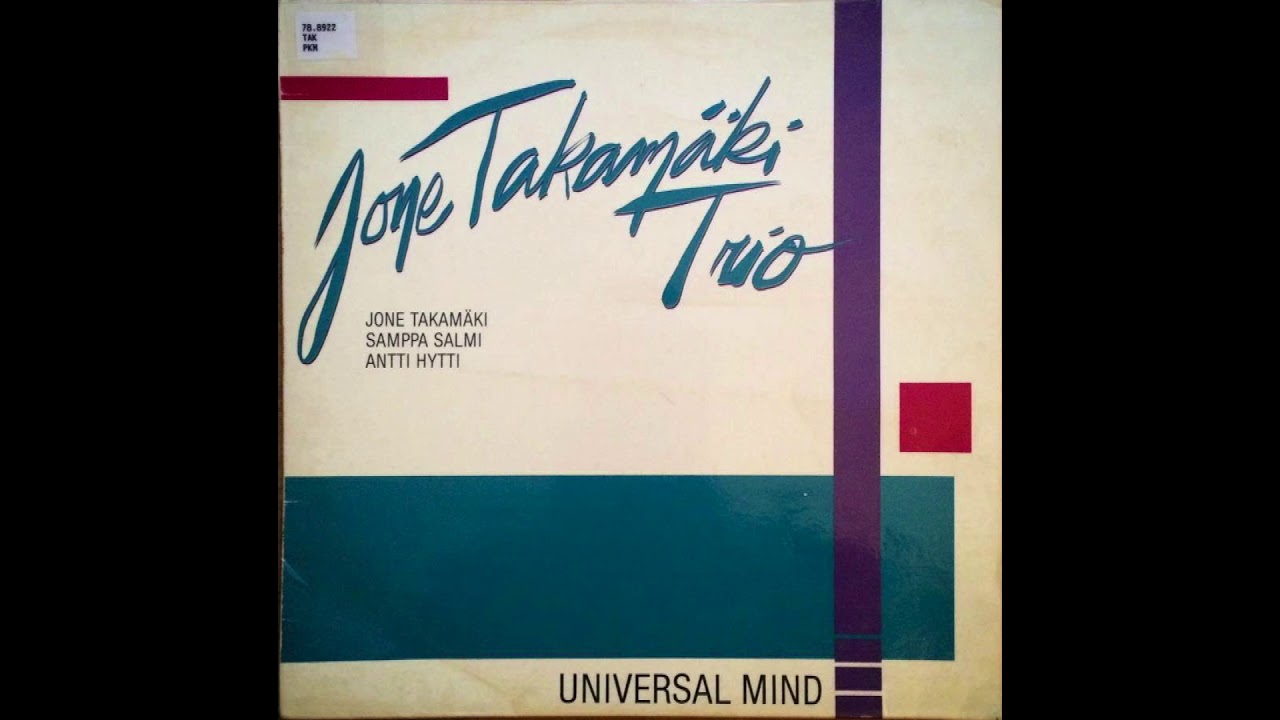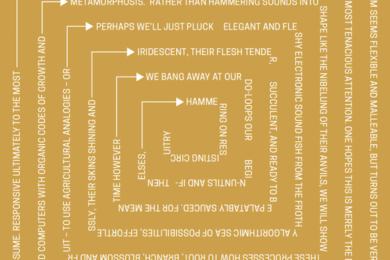Vinyl Therapy, Saturday afternoons in the upstairs room of a pub near London Bridge. The theme of the month was ‘wordlessness’. I was quite pleased with my selection: Francisco López, a white-vinyl 12-inch made up of soft, undulating waves of rich, warm vinyl crackle, the sound of a needle trapped in a groove for eternity. Released in 2000 on Mego Editions, ‘Untitled 92’ neatly bottles the coming tsunami of vinyl fetishism, somewhat wordlessly. But soft crackle through my Thorens and pre-amp at home turned out to be the sound of someone sandblasting stucco off the front of their house once routed through a pub-sized PA. The idea behind Vinyl Therapy is you choose three tracks (on the given topic) for the assembled listeners. I was issued with three straight ‘jazzbos’ for the López, which remains a record to this day – at least until an appropriate theme allows me to turn up with my copy of Pekka Airaksinen’s Buddhas of Golden Light: crazy, squelchy, electronic synthscapes of Finnish jazz from 1984; a total room-clearer, unless you have all channels open. Any sound-transference problems between upstairs at the Old King’s Head and my front-room stereo seem to apply in microcosm in our house: played through the 1980s amp and speakers in the kitchen Buddhas of Golden Light is full of blurts, jerky keyboard flourishes and a harsh electronic sheen; but, like with ‘Untitled 92’, on the Thorens a warm bass(y) undertow pulls you through and there’s glorious scuffling organ and keyboard ripples on the side-long ‘Kandrasuryapradipa’, glowing tones and notes bouncing crazily like the filaments of a fibre-optic lamp caught in a breeze. There’s groovy sax on ‘Sukirti’, and you could almost describe the basslines on ‘Ratnasikhin’ as jazzily funky – if it weren’t for the arrhythmic growling. Those two tracks are separated by the beautifully eerie quiet interlude ‘Suvarnasatarasmibhasagarbha’. Like a painting that changes colour with the light, every time you place the needle on Buddhas of Golden Light it never sounds quite the same way you remembered it. For something so potentially wibbly it’s pretty dulcifying; it’s somehow very fast but also slow.
“I just remember hearing it and being like, ‘What the fuck is this?!’” remembers Jennifer Lucy Allan of Arc Light, whose fourth Edition was Buddhas of Golden Light, in 2015. “I’d never heard anything like this, ever. And all the way through, doing the reissue, and even now listening to it – it is a truly remarkable record – I still think, ‘Is this completely amazing? Or is it terrible?’ It’s not difficult, it’s just something else. It’s full on – it doesn’t really have any rhyme or reason to it. Lots of people have said it’s got this really frantic energy. There is something extremely compelling to the idea somebody’s got a DX7 and is programming it like nobody else is programming it in the world – and then is jamming sax over the top. In terms of a synthesizer here’s somebody who’s using it in a totally different way. In the mid-eighties that was so early for that stuff.”
We’re in a spruced-up café on Leyton High Road that serves flat whites and pastéis de natas laced with raspberry jam. Down the road there’s still a branch of Flying Carpets, a Kwik-Fit and a shop that looks like it’s been undertaking ‘tent and marquee repairs’ since the first mass trespass on Kinder Scout. I can’t see the old greasy spoon that used to be an integral part of the match-day experience at Brisbane Road, but the character of the block – pubs, bookies, laundrettes and the flower beds in Coronation Gardens – doesn’t look too much under threat.
“Pekka died recently,” continues Jennifer. “He was a really lovely fella, super-mischievous and charming. He had an old hand-built HTML website where you think, ‘There’s no way this email still works.’”
A sort of electric blue background with yellow courier text?
“Yeah, totally textured background and stuff. I emailed one of the addresses on that and he just got back and was, ‘Yes, fine.’ I had dives around music, not necessarily for the label, I’d just go in – it’s like that’s my flow-state – and I’d come across this one. You’d follow threads and threads and come up an hour and a half later, just going around and around. It was on the Nurse With Wound list as well, so maybe that was a link. I had this spell where I did a couple of Finnish records by accident. I think that was just what I was listening to at the time.”

A key entry point to the Finnish avant-garde was Arktinen Hysteria – “a CD compilation from the late nineties/early noughties of avant-garde experimental music from Finland; a collection of some new and older stuff: really, really good; with some mad stuff on there” – and the follow-up, More Arctic Hysteria/Son of Arctic Hysteria: the Later Years of Early Finnish Avant-Garde. Erkki Kurenniemi, as well as Airaksinen’s sixties experimental freeform troupe The Sperm were on the first volume (along with Airaksinen’s solo ‘A Little Soup for Piano and Orchestra Op.46.8’); the second featured the Jone Takamäki Trio.
“I really got into Kurenniemi. Why did I get into Erkki Kurenniemi?” ponders Jennifer. “He was this electronic music pioneer. He recorded everything. He would drive to work and record just a rambling narrative. He really enjoyed drinking a lot of wine and getting stoned and making sex films – but he also built the first electronic music studio in Finland in Helsinki. And had this very physical approach to doing it: one of his early pieces is incredible – this piece called ‘On–Off’, lots of the sounds of it are basically punching a synthesizer, which to me stood in total contrast to the BBC Radiophonic Workshop.
“So I was reading up about Kurenniemi and listening to the Arktinen Hysteria thing, the band Circle, and I went to Helsinki to review a Kurenniemi show and met up with Pekka. He ran a meditation centre in Finland but he also had a place in Helsinki at that point. And I just wanted this one record, but he’s got loads. There’s a French compilation of his stuff that’s brilliant. I went to his house near the centre of Helsinki, and I remember we walked through this strange shopping centre. Inside his flat there was stuff everywhere – a suitcase full of coat-hangers in one corner, a big reel-to-reel, records everywhere. We had this very broken conversation of him handing me this and this” – Jennifer mimics a tower of CD-Rs beginning to accumulate – “and he gave me a bunch of weird CD-Rs. There’s as many Buddhas as you want, basically – 909, or something – but he’s got loads and loads of records and he just kept going and pressed a lot of them himself [many dedicated to individual Buddhas]. But he mainly ran this meditation centre.”
The centre was in Siikainen, to the west of the country, in a former municipal building. Finland: the land where there are more trees than people, but the population that does exist reads more books per capita than any in the world. The Finns’ idea of team building in the workplace doesn’t seem to revolve around white-water rafting or personality tests – rather an afternoon trip out of the office to play crazy golf in the woods. There are mini-golf courses everywhere. The Finns love crazy golf. “But they’re really not into small talk,” adds Jennifer. “Maybe it was because I’ve always been into Pan Sonic since I was a teenager – one of those tracing threads kind of things: Mika Vainio loved Kurenniemi and the scene is quite small there – but what I was really drawn to about lots of the Finnish music from that post-war period (up to the nineties, really; up to now) is that for a long time Helsinki was quite cut off from the rest of Europe. Very right wing though, too,” Jennifer adds, before I get too dewy eyed about a country where the far-right scores well in the share of the vote (albeit alongside a welfare state and a tradition of collective bargaining coveted by many and, at the time of writing, a centre-left coalition government). “Pekka told really cheeky stories about people getting arrested; the legendary story from when he was in The Sperm – getting arrested for simulating live sex on a piano in Helsinki university, and you think, ‘That’s what happens in British universities every single weekend.’”
The third track that sprang from More Arctic Hysteria was the Jone Takamäki Trio’s ‘Bhupala 1’, itself from a dreamy slow burn of an album, Universal Mind, full of drifting alto sax over glistening vibraphone, gongs and tabla, bass clarinet and Indian organ – sometimes in a 1980s ECM(ish) way; sometimes darker. “That’s another anomaly of a record which was a proper obscurity,” remarks Jennifer. “This sort of spiritual jazz record. Jone Takamäki plays saxophone and the shakuhachi and he’s really into Japanese culture. I’d ring him and he’d be in the studio: ‘Hey, let me play the shakuhachi’ – down Skype. He said, ‘I don’t want any money. I don’t want anything. I just want to play a show in London.’ So we did that [at Café Oto]. He was quite young when he made the record. And this is what I really like about doing the reissues: you get to hear the stories of how bonkers the music industry – or releasing music – has always been. Like, ‘Oh, well, I got paid with ten copies of that record.’ With Universal Mind there was a story of how he was going out on tour and they’d done this album and there was a mastering done on it and they hated it, and were, ‘Don’t release that. We’re going to sort it out when we get back.’ Then, after being on tour, they were driving back through town [Helsinki] and saw it in a bunch of record shop windows and were like, ‘WHAT??!’ They hated it. So we got it remastered and it’s a beautiful record. I absolutely love it and still play it all the time. If I ever DJ in a bar – when I DJ it’s not usually to make people dance; it’s usually background or bar stuff – every time I play it in a bar or at Oto or anything like that people will ask, ‘What is it?’ It sounds like this weird spiritual jazz, it’s this Finnish guy in the mid-1980s! We sold out. People would like us to repress it.”
I’d buy a copy, I point out – rather than pay £30 plus postal costs from someone in South Korea, or £67.50 for a copy from the Russian Federation on Discogs. (Someone in Finland was selling an original ‘with ring wear and seam wear’ for 75 Euros at the time of writing.)
“The reason we haven’t repressed it is just because I don’t think there’s enough demand for us to,” says Jennifer. “We’d have to press 500 and we haven’t got any sleeves left over. The problem with doing little represses is it’s easy if you’ve got sleeves, but you have to do 500 sleeves at a time these days.” It’s a conundrum that goes right to the heart of what kind of a reissue label Arc Light Editions is. Economic considerations are just one factor. It’s exactly two years since I sat over the counter from Eric in the Mississippi shop in Portland and he mentioned that he could press albums for roughly 90 cents a copy (excluding printing and packaging). Over the subsequent 48 months costs have rocketed – not only in the manufacturing, but also for the vinyl nut sweating by the racks or over the ‘buy’ button. It’s a perfect storm of circumstance, “a vast, multi-faceted thing,” believes Jennifer, who is “obsessed with trying to find a cheaper way to press vinyl. Paper costs went up because oil went up. Vinyl pressing, we forget, is a totally environmentally corrupt thing to be doing, and it’s something that I’m really having a problem with at the moment. Where the first sleeves were a higher GSM [grams per square metre], the ones now, they’re recycled and shittier, but I don’t care – and they keep our costs down. Basically, a couple of years into our stuff, not only paper costs but distribution costs rocketed too; getting something between different countries, especially if it’s transatlantic, went up massively.”
I mention buying Light in the Attic’s triple vinyl box set I am the Center: Private Issue New Age Music in America, 1950–1990 for something like £32 a short while after it came out in early 2014. Why is it that six years later Kankyō Ongaku: Japanese Ambient, Environmental & New Age Music 1980–1990, pressed on translucent blue vinyl but essentially the same package (from a production point of view), costs nearly double at £58?
“If you’re buying from Light in the Attic it costs them now a huge amount more to get something over to the UK, so we are feeling that as British record buyers,” notes Jennifer. “And also the pound is weaker against the dollar. All that stacks up. Paper, transport, exchange rates. Also a lot of the plants are working at capacity, so some of the plants where you used to be able to get 250 copies pressed now only do minimum 500; places have upped their minimum order. One of the places I pressed with, Disc Solutions down in south London, I used to have idle chats with the guy there when we were ordering stuff: ‘What’s going on? Why the wait?’ That was Record Store Day, basically, which prompted the majors to realise they had this huge catalogue and everyone was buying vinyl again – demand was up by something like a 40 per cent according to someone at Disc Solutions. And it’s only in the last five years that clothes shops started stocking vinyl. The majors used to have their own plants but they shut them down. So if you’re not an established customer the chances are you’ll be on the waiting list. There’s no pressing plant in the UK [most UK releases are pressed in Poland or Germany].”
Listening to the Wind: Encounters with 21st Century Independent Record Labels by Ian Preece is published by Omnibus Press





